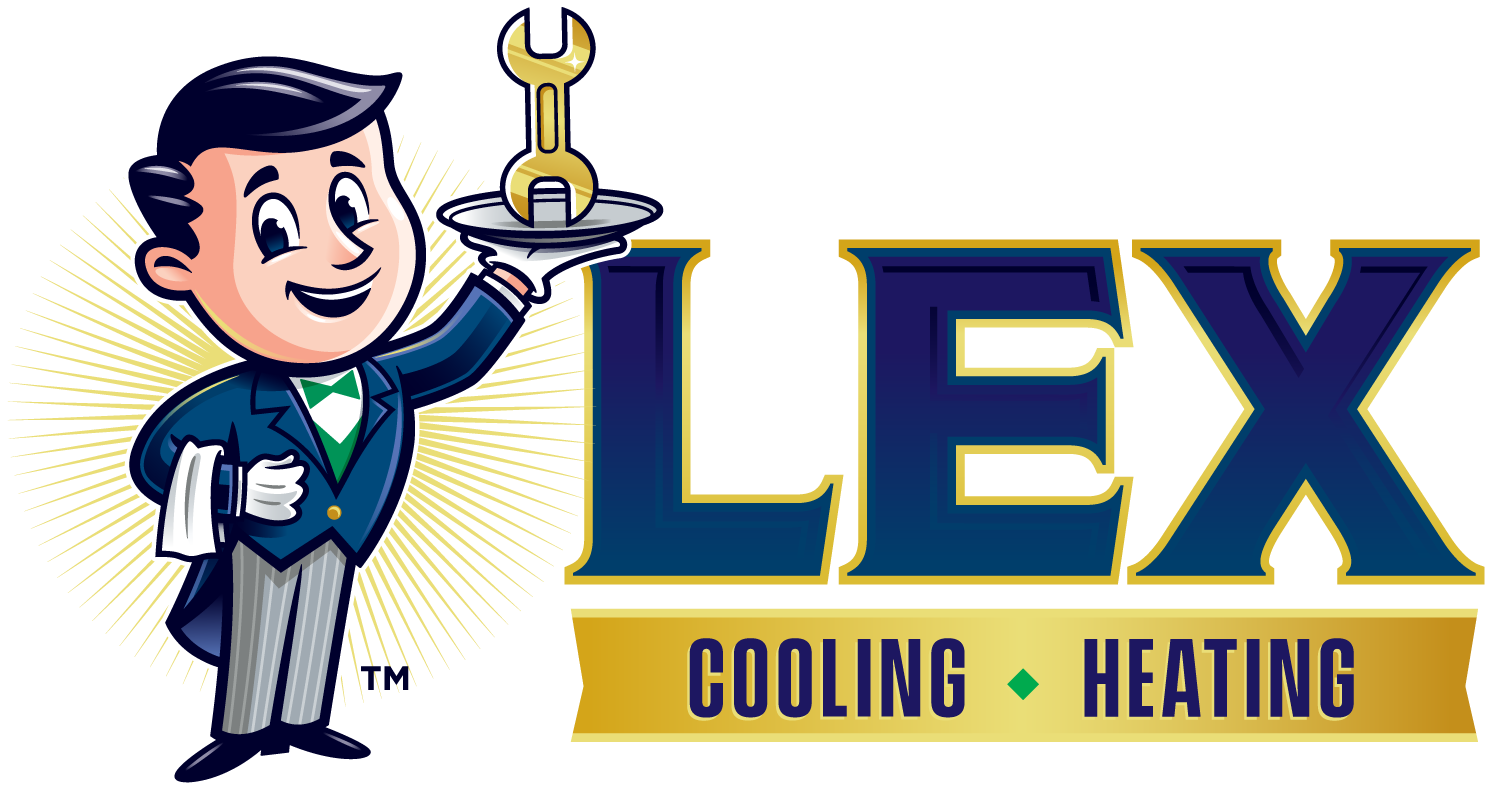Dealing with air conditioning problems can be stressful, especially during the hot East Texas summers. When your system isn’t working as it should, turn to trusted Tyler air conditioning professionals for fast, reliable help.
At Lex Air East Texas, our experienced HVAC technicians provide expert maintenance and repair services to keep your home comfortable year-round. Whether you’re experiencing low airflow, unusual noises, or a unit that won’t turn on, our team can inspect your air filters, check for proper ventilation, and evaluate key system components to identify the cause of the problem.
Don’t wait for a minor issue to become a costly repair. Contact us today by calling (903) 833-9510 or fill out our online contact form to schedule an appointment with one of our trained HVAC technicians. We’ll restore your system’s performance and ensure your home stays comfortable no matter the season.
What Is a Blower Motor in an HVAC System?
A blower motor is an electric motor and a crucial component of your HVAC system, responsible for circulating air throughout your home. When the system is running, the motor powers the blower fan, which pushes heated or cooled air through your ductwork and out of your vents. This continuous airflow helps maintain even temperatures and ensures consistent comfort in every room.
Many homeowners don’t realize how important the blower motor is until it stops working. Most residential HVAC systems use fixed-speed or single-speed blower motors, which operate at one constant speed whenever the system is on. However, newer and more energy-efficient units may feature variable-speed blower motors that adjust fan speed based on your home’s temperature needs. This allows for quieter operation, improved energy efficiency, and more precise climate control.
Depending on the design of your HVAC system, the blower motor can be either an AC motor or a DC motor. AC motors are more common in older systems, while DC motors are typically found in modern, high-efficiency models that consume less power and provide smoother performance.
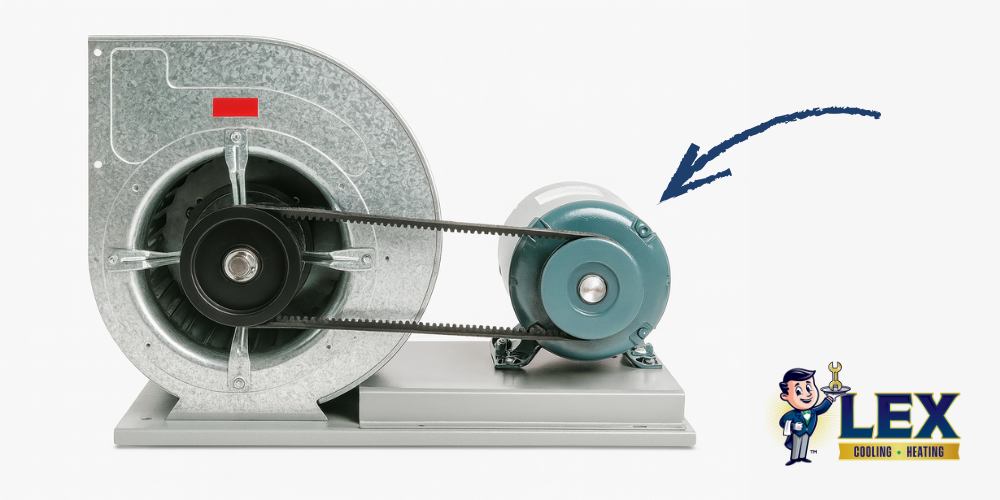
Where Is the Blower Motor Located?
The blower motor works from the indoor unit of your HVAC system, housed within either the air handler or furnace. It sits near the fan that circulates air throughout your home. The exact location varies depending on the type and model of your system, but in all cases, the blower motor plays a vital role in distributing heated or cooled air through your ductwork to maintain consistent indoor comfort.
Furnace Blower Motor
In a furnace system, the blower motor is generally located in the lower section of the furnace, close to the air intake and blower fan. It sits behind an access panel and is responsible for circulating warm air through the home’s ducts. Although it’s designed to withstand high temperatures, it can still overheat or wear out over time.
Common signs of a failing furnace blower motor include unusual noises, reduced airflow, or little to no change in temperature despite the system running. Your furnace may still operate but won’t heat efficiently, leading to higher energy costs and uneven comfort. If you notice these symptoms, it may be time for an upgrade. When that time comes, trust the HVAC pros at Lex East for furnace replacement in Tyler, TX.
AC Blower Motor
In most air conditioning systems, the blower motor is located inside the indoor air handler unit, usually near the evaporator coil. This placement allows the motor-driven fan to push cooled air efficiently through the ductwork and into your living spaces.
Depending on your system’s configuration, the AC blower motor may be mounted horizontally or vertically. Because accessing this component can be complex, it’s best handled by a professional. An experienced HVAC technician from Lex Air East Texas can safely inspect, clean, or replace the blower motor to ensure optimal system performance and airflow efficiency.
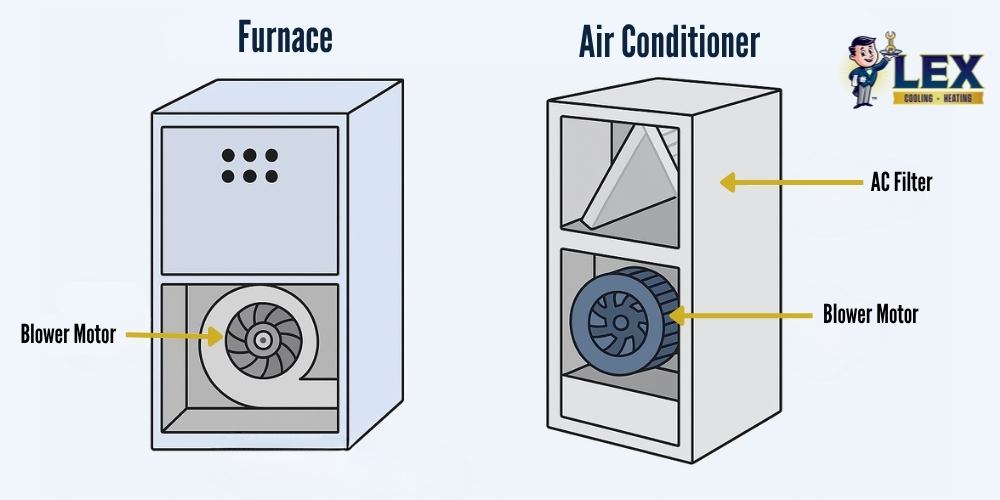
Parts of Blower Motors
A blower motor operates by utilizing a blower fan, a resistor, and a relay. The motor powers a fan that pushes air through the ductwork, while the blower motor resistor controls the fan speed. The HVAC blower motor relay acts like a switch, sending power from the system to the motor when it’s time to run. Together, these parts help deliver steady air circulation and maintain your indoor comfort.
Blower Motor Resistor
A blower motor resistor controls the speed of the HVAC blower fan. It works by adjusting the amount of electrical current that reaches the blower motor. Lower fan speeds use more resistance to reduce the current, while higher speeds allow more current to pass through. This allows you to select different settings from your thermostat or control panel.
Blower Motor Resistor Symptoms
A failing blower motor resistor can cause the fan to stop working at certain speed settings or only work at one speed, usually high. You might also notice weak airflow from the vents or the fan not turning on at all. In some cases, the fan speed rotation may change unpredictably or fail to respond to the controls. Most blower motors can last up to two decades with proper maintenance.
Blower Motor Resistor Location
The resistor is typically located near the blower motor itself, inside the HVAC system’s air handler, or behind the dashboard in vehicles. It’s often mounted in the airflow path to help keep it cool during operation.
Blower Motor Relay
A blower motor relay is an electrical switch that controls power to the blower motor. When you turn on the HVAC system, the relay receives a signal to close the circuit, allowing electricity to flow to the motor. This helps protect the equipment by managing the high current needed to run the motor. The relay is usually located in the fuse box or control panel, either under the hood or inside the HVAC unit. Without a working relay, the blower motor may not turn on at all.
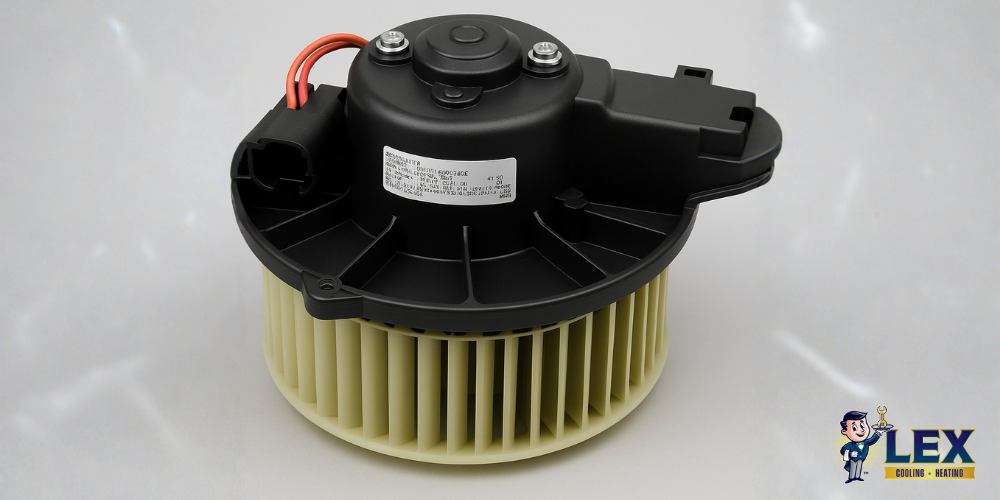
How to Replace Blower Motor
The process depends on which part of the motor is causing the blower motor failure. You may need to replace your blower motor if the fan stops working, runs at only one speed, or makes unusual noises. A Tyler HVAC professional on our team at Lex can diagnose the issue to determine which component is causing the problem.
HVAC Blower Motor Replacement
If your HVAC blower motor needs to be changed, you’ll need to remove the old motor from the indoor air handler and install a new one to restore proper airflow. Disconnect the power to the HVAC system, detach the motor from the fan assembly, and rewire the new unit. It is possible to replace the motor yourself, but you may want to leave the task to the professionals.
If you feel uncomfortable completing any part of the replacement, call a professional technician. They can ensure the new motor is compatible and correctly calibrated to maintain your system’s performance.
Furnace Blower Motor Replacement
Replacing your furnace blower motor can feel overwhelming, but working with experienced HVAC professionals ensures the job is done safely and correctly. The blower motor is an electric component that circulates air through your home’s ductwork, playing a vital role in maintaining even temperatures and efficient airflow. When it begins to fail, you may notice unusual noises, inconsistent heating, or reduced air circulation.
Regular HVAC maintenance can extend the life of your blower motor and prevent costly breakdowns. If replacement becomes necessary, our technicians from Lex Air East Texas can assess your system, identify the correct replacement motor, and install it with precision. Our professional furnace installation services in Tyler, TX not only restore performance but also help prevent future issues by ensuring all components are properly calibrated.
Furnace Blower Motor Replacement Cost
The cost of furnace blower motor replacement can vary depending on the type of motor, labor rates, and local parts availability. Replacement parts generally range from $100 to $1,000, with high-efficiency or variable-speed motors on the higher end of the scale. Labor costs typically add up to $400, depending on the complexity of the repair and your location.
At Lex East, we provide transparent pricing and expert service to restore your system to peak efficiency. Whether your blower motor needs repair or full replacement, our team will ensure your furnace delivers reliable, energy-efficient performance through every season.
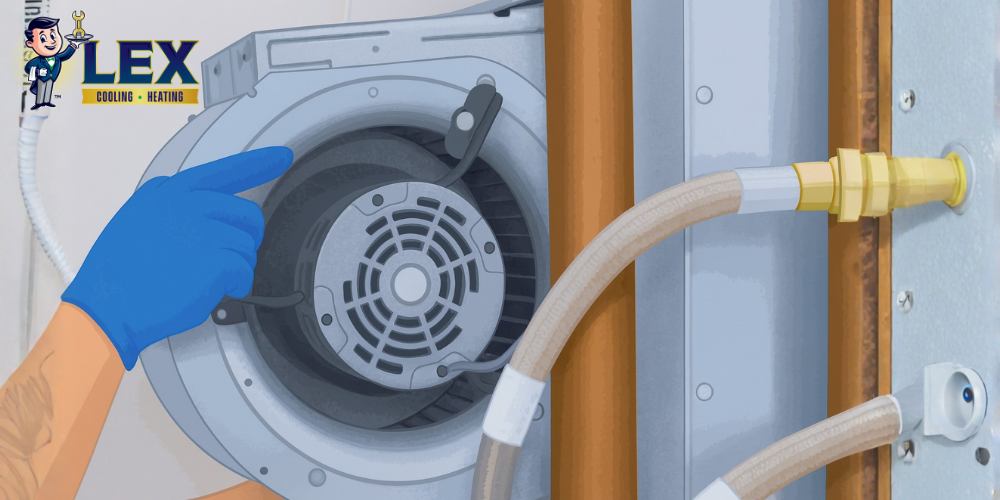
AC Blower Motor Replacement
Replacing your AC blower motor can be a frustrating experience, but with the help of a trained HVAC professional, the process becomes much easier and safer. When this component begins to fail, you may notice weak airflow from your vents, uneven room temperatures, or unusual noises coming from the unit. These are clear signs that the blower motor may no longer be operating efficiently.
The right repair starts with identifying and installing the correct replacement part for your system’s make and model. Because blower motors require precise wiring and calibration, hiring a qualified technician is the best way to avoid costly mistakes and ensure your air conditioning unit runs efficiently. Once replaced, your AC will deliver consistent, reliable cooling throughout your home once again.
AC Blower Motor Replacement Cost
The cost of AC blower motor replacement varies depending on the part type, model, and labor requirements. Replacement motors typically range from $300 to $1,000, with the total cost (including labor) averaging between $560 and $650. Factors such as system efficiency, accessibility, and motor type can all influence the final price.
If you suspect your blower motor is failing, the Tyler air conditioner replacement team at Lex Air East Texas can inspect your unit, identify the issue, and perform expert repairs or replacements to restore peak performance.
Is Your AC or Furnace Blower Motor Not Working?
Whether your AC or furnace blower motor is struggling, early detection can prevent more extensive damage and higher energy costs. Common symptoms include reduced airflow, dirty air filters, or warm air blowing when the system should be cooling.
To keep your HVAC system running smoothly:
- Ensure regular HVAC filter replacement to maintain adequate airflow
- Check vents and ductwork for blockages or leaks
- Schedule periodic system inspections with a Lex Air HVAC technician to identify worn components early
If your system still isn’t performing properly, contact Lex Air East Texas for professional blower motor diagnostics and repairs. Our skilled technicians will ensure your system runs efficiently and reliably through every season.
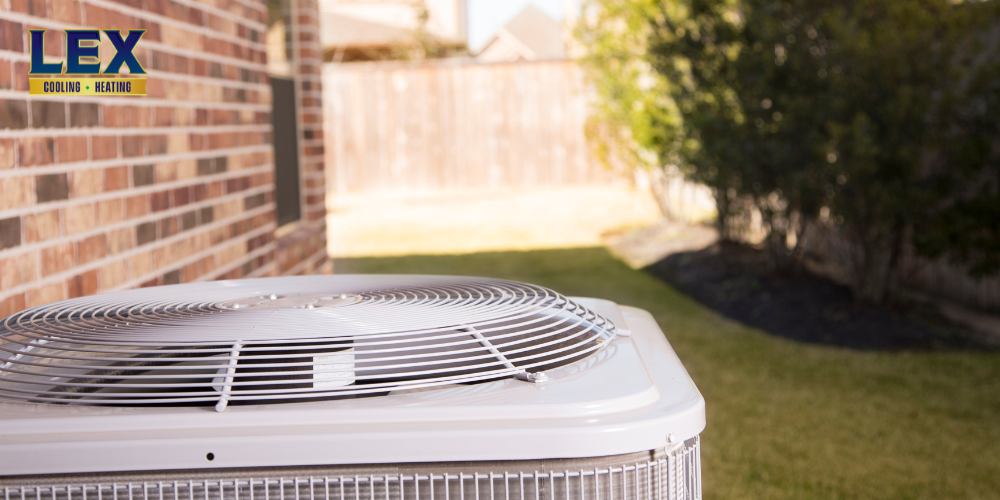
How to Test a Blower Motor
Testing a blower motor can help you determine whether it’s working properly before scheduling a professional HVAC service call. Even with regular maintenance, your home’s heating and cooling system may develop issues that affect performance.
Start by listening for unusual noises when the unit is running. Grinding, rattling, or squealing sounds can indicate worn bearings or loose components within the motor. Next, check the airflow coming from your vents. Weak or inconsistent air pressure often signals a blower motor problem.
For a more precise check, use a multimeter to test whether the blower motor is receiving power. If no voltage is detected, there may be an electrical issue, faulty capacitor, or internal motor failure. These simple tests can help identify potential problems before calling a professional HVAC technician.
Bad Blower Motor Symptoms
Recognizing the early signs of a failing blower motor can help you prevent more serious system damage and costly repairs. Common symptoms of a bad blower motor include:
- Weak airflow or no air coming out of vents at all
- Inconsistent operation or frequent cycling
- Unusual noises, such as grinding or humming
- Overheating or burning smells
- Frequently tripped breakers or electrical malfunctions
If your AC won’t turn on or airflow suddenly stops, the blower motor may be the cause. Turn off your system immediately to avoid further damage and contact a Lex Air East Texas HVAC technician for a complete inspection and repair recommendation tailored to your specific system.
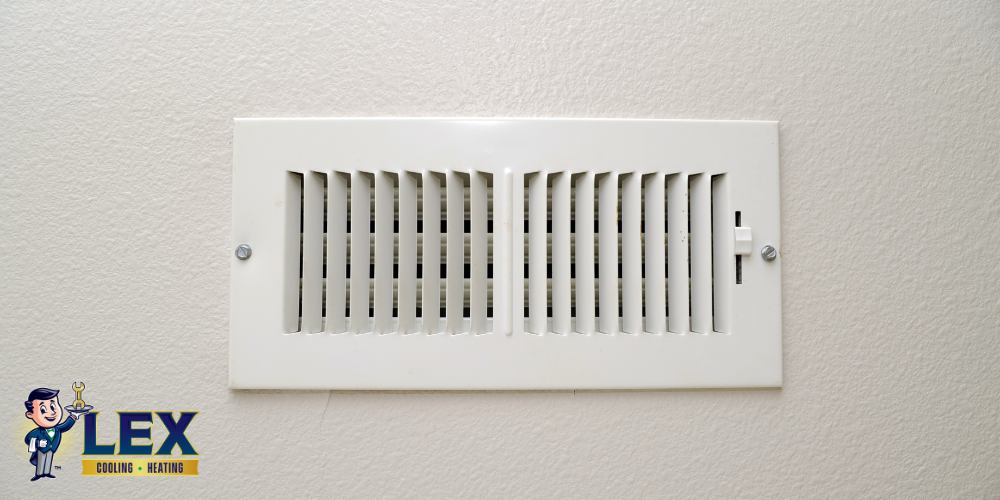
How to Reset Blower Motor
If your blower motor stops working, a simple reset may temporarily restore operation. However, overheating or electrical problems can cause the system to shut down for safety reasons, so proceed carefully.
Allow the unit to cool down completely before attempting a reset. Most residential HVAC units feature a small reset button located on or near the blower housing. Press and hold this button for several seconds to reboot the system.
If the blower restarts, monitor it closely for warning signs such as strange noises, burning odors, or the system shutting off again. These symptoms may indicate a more serious issue requiring professional service. When in doubt, schedule an inspection with a qualified technician to prevent further system damage.
Indoor Blower Motor Troubleshooting
Basic troubleshooting can sometimes reveal why your indoor blower motor isn’t working properly. If you detect a burning smell, low or no airflow, or ventilation issues, check to make sure the motor is receiving power and hasn’t overheated.
Other quick troubleshooting steps include:
- Inspecting the capacitor for damage or swelling
- Ensuring filters, vents, and ducts are clean and unobstructed
- Removing dust or debris from around the motor housing
If these checks don’t resolve the issue, the problem could stem from internal electrical faults, worn bearings, or control board issues. In that case, contact Lex Air East Texas for professional HVAC troubleshooting and repair. Our skilled technicians can diagnose blower motor failures, restore airflow, and help keep your system running efficiently year-round.
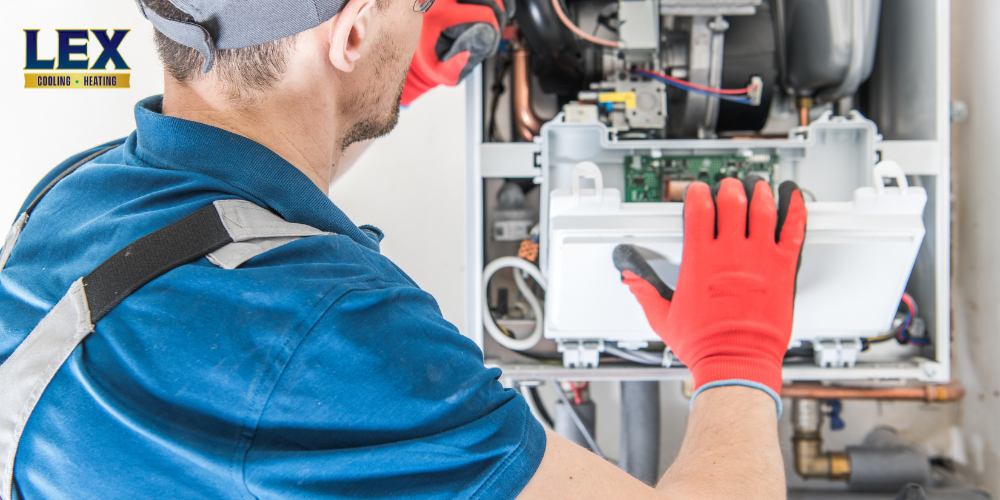
Contact Lex Air East Texas for HVAC Repair and Replacement in Tyler, TX
If your HVAC blower motor fails or you’re experiencing issues with your air conditioning or heating system, the experts at Lex Air East Texas are here to help. The blower motor is an essential component of your HVAC system—an electric motor that helps circulate air throughout your home to maintain a consistent temperature and ensure optimal performance. When this or other components begin to malfunction, your comfort and your home’s indoor air quality can both suffer.
For more than a decade, our team has provided trusted HVAC repair and replacement services in Tyler, TX, helping homeowners restore comfort, efficiency, and air quality. Whether you’re dealing with a failing blower motor, airflow issues, or need an air filter replacement, Lex Air East Texas delivers fast, dependable service tailored to your system’s needs.
Contact us today at (903) 833-9510 or complete our online contact form to schedule an appointment. Our experienced technicians will inspect your system, address the problem, and help keep your HVAC unit running efficiently year-round.
